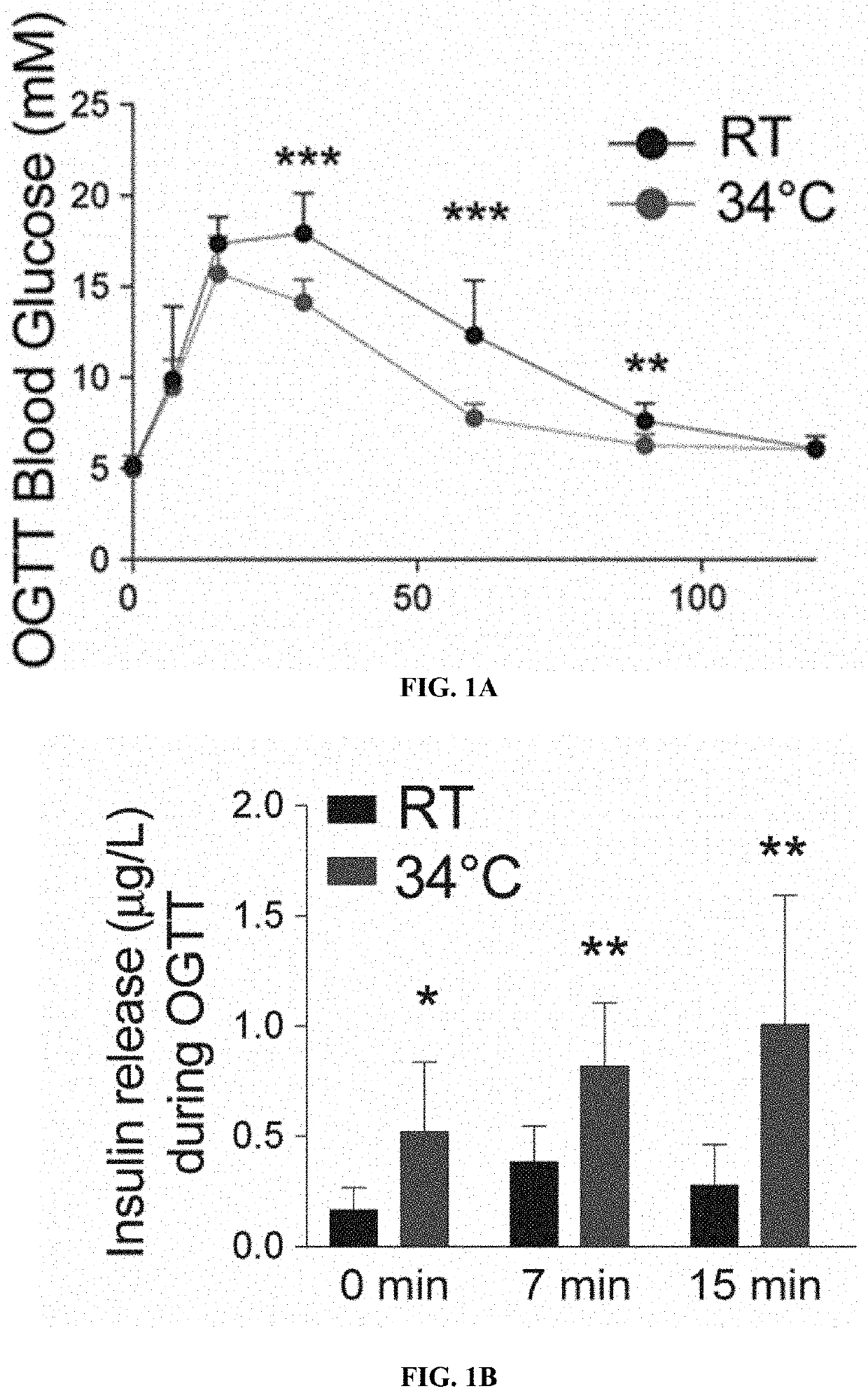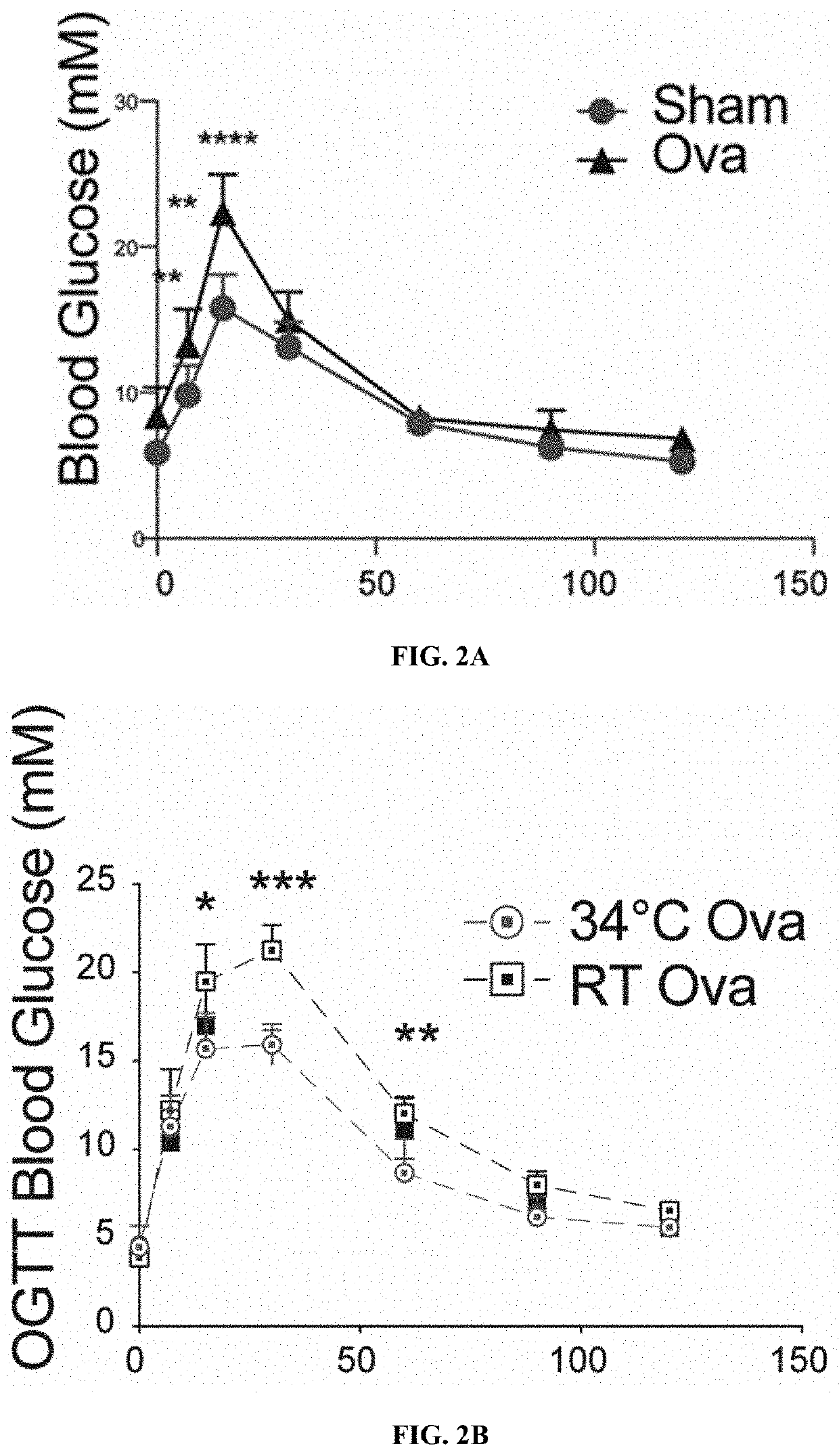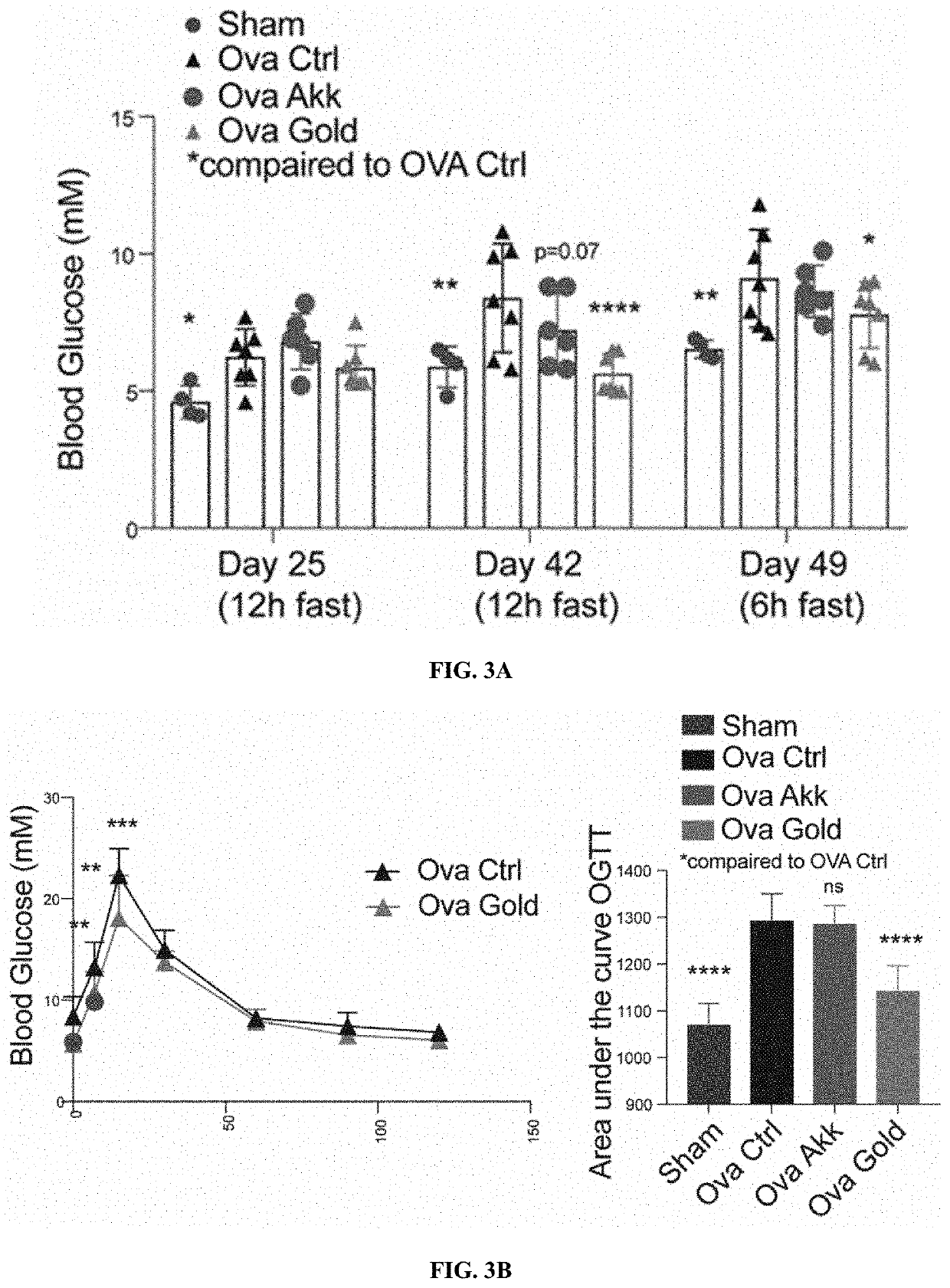Methods and probiotic compositions for the treatment of metabolic diseases and disorders
a metabolic disease and composition technology, applied in the field of biochemistry and medicine, can solve the problems of obesity and type 2 diabetes, serious adverse health consequences, and several very serious health consequences, and achieve the effects of improving glucose tolerance and metabolism, reducing fatty liver in vivo, and improving insulin sensitivity
- Summary
- Abstract
- Description
- Claims
- Application Information
AI Technical Summary
Benefits of technology
Problems solved by technology
Method used
Image
Examples
example 1
Warm Exposure, and Heat-Inactivated Parabacteroides goldsteinii Improve Glucose Metabolism and Reduce Fatty Liver in Post-Menopausal Mouse Model
[0082]To assess the effect of warm temperature on the glucose metabolism 8-week-old male mice were cared for at 34° C. for one month. Monitoring their glucose tolerance, that warm exposed animals showed improved glucose tolerance following oral glucose load (FIG. 1A), which was associated with an increased insulin secretion (FIG. 1B). Whether similar effects would be observed in metabolically challenged condition, such as the post-menopausal weight gain and glucose intolerance was then investigated. Mimicking post-menopausal weight gain and glucose intolerance by ovariectomy, estrogen deficiency worsened the glucose tolerance as was observed during an oral glucose tolerance test (OGTT, FIG. 2A). Interestingly, the reduced glucose tolerance was rescued when the mice were exposed to warm temperature (FIG. 2B), indicating that warm exposure imp...
example 2
Methods for Treatment of Obesity
[0087]Visceral adipose tissue browning. To address the microbiota importance during long term cold exposure, we subjected antibiotics (Abx)-treated, microbiota-depleted mice to cold (referred to as “combined treatment”). Surprisingly, according to our preliminary results, not only did the mice show further improvement in their glucose tolerance compared to the nontreated- or single stimulus-treated mice, but also cold exposure of the microbiota depleted mice led to massive and preferential fat loss from the VAT (FIGS. 6A-B). While under non-stimulating conditions all treated groups showed similar increase in the SAT [3H]-2-Deoxy Glucose ([3H]-2-DG) glucose uptake, the VAT of the cold-exposed microbiota-depleted mice displayed markedly higher glucose uptake compared to all other groups (FIG. 6C). The dramatic VAT weight reduction despite the increased glucose uptake in this tissue in the cold-exposed microbiota-depleted mice even under basal conditions...
example 3
Materials and Methods
[0097]Animals: All C57BL / 6J mice were purchased from Janvier Labs and kept in a specific pathogen-free (SPF) facility in individually ventilated cages. All the mice were on a 12 h day / night cycle and fed a standard chow diet (16.2 MJ / kg Gross Energy; 9 kJ % Fat, 33 kJ % Protein, 58 kJ % Carbohydrates, V1534-727, Ssniff, Germany). All the mice used were either male and entered the experiment at 8 weeks of age, or female starting at 16 weeks of age (for the ovariectomy experiment). Acclimatized animals were allocated into groups based on their body weight to ensure equal starting points. Warmth exposure was done at 34° C. in a light and humidity-controlled climatic chamber (TSE, Germany) in SPF conditions using individually ventilated cages. All mice were sacrificed after 5 h fasting. All animal experiments were approved by the Swiss federal and Geneva cantonal authorities for animal experimentation (Office Vétérinaire Federal and Commission Cantonale pour les Exp...
PUM
 Login to View More
Login to View More Abstract
Description
Claims
Application Information
 Login to View More
Login to View More - R&D
- Intellectual Property
- Life Sciences
- Materials
- Tech Scout
- Unparalleled Data Quality
- Higher Quality Content
- 60% Fewer Hallucinations
Browse by: Latest US Patents, China's latest patents, Technical Efficacy Thesaurus, Application Domain, Technology Topic, Popular Technical Reports.
© 2025 PatSnap. All rights reserved.Legal|Privacy policy|Modern Slavery Act Transparency Statement|Sitemap|About US| Contact US: help@patsnap.com



